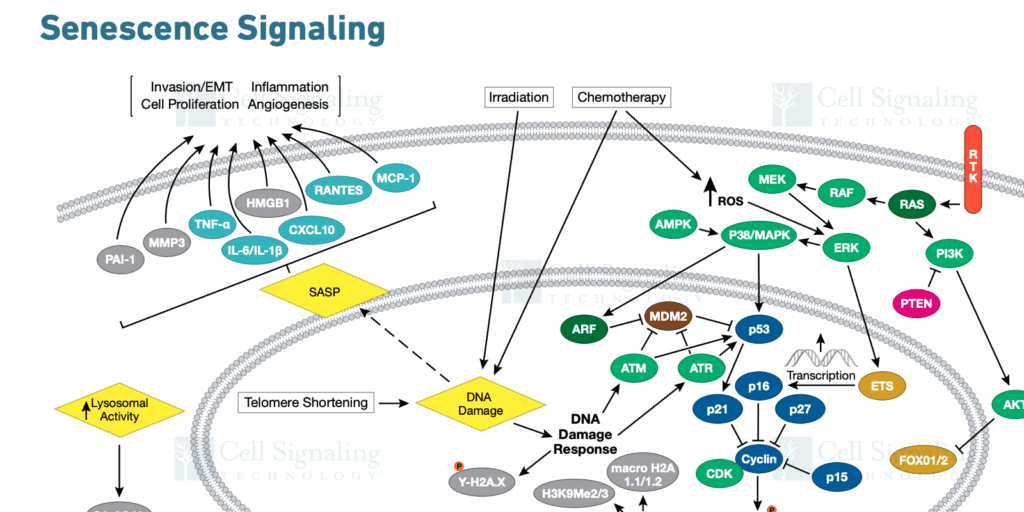
“Values are related to our emotions, just as we practice physical hygiene to preserve our physical health, we need to observe emotional hygiene to preserve a healthy mind and attitudes.”— Dalai Lama
Article Authors: Gordon Slater| Tandose Sambo
When the root cause of disruption of the cellular growth cycle is influenced by DNA damage, the process is known as cellular senescence. Cellular senescence is an adaptive response in the cellular cycle that is induced by a multitude of influencers within the cell environment.
As a protective mechanism that keeps an organism healthy, senescence is an inbuilt intelligence that enables healthy cells to keep replicating and enables unhealthy cells to be eliminated by the body.
The accumulation of persistent senescent cells is directly linked to the prevalence of age related conditions, and inflammatory conditions.
Mechanism of Action
Human cells have the ability to exhibit replicative senescence. The phenomenon is influenced by the length of the telomeres that are part of chromosomes. The change in length of telomeres initiates a procedure known as DNA damage response (DDR), which short circuits the cell cycle. Cellular senescence can result in additional downstream effects induced by DNA damage.
Cellular mechanisms take place via a series of intracellular pathways that take place in an organised, systematic manner. Cellular senescence disrupts these mechanisms. According to Cell Signal Technology, the mechanism is outlined below:
“Similarly, cellular senescence can result in response to DNA damage by irradiation or chemotherapeutics, as well as tumor suppressor loss, elevated reactive oxygen species, and mitochondrial dysfunction. These stimuli signal via a number of intracellular pathways—including the DDR components ATR, ATM, and p53—which converge on the activation of cyclin dependent kinase inhibitors (CDKIs)—p16, p21, and p27—and lead to hyperphosphorlyation of the retinoblastoma protein (RB) and ultimately, withdrawal from the cell cycle.”
Senescent cells have differing physiological shapes to normal, healthy cells. Senescent cells no longer proliferate, and they remain metabolically active. Additional characteristics they possess include:
- Showing dramatic changes in their secretome. The secretome is the set of proteins expressed by an organism and secreted into the extracellular space. The process of changing the secretome is known as senescence-associated secretory phenotype (SASP).
- The SASP impacts downstream regulatory processes in the cell cycle
- The SASP will have beneficial and detrimental consequences according to the internal cell chemistry.
Medical science is starting to grasp the factors that cause cellular senescence, and how it impacts human health. With an understanding of the behaviour of cells, the appropriate levers and decisions can be made to optimise health. Treatments such as reversing age-related pathologies, and cancer treatment are the priorities.
Reference:
[1] Senescence Signalling: https://www.cellsignal.com/pathways/senescence-signaling-pathway#:~:text=Cellular%20senescence%20is%20an%20adaptive,state%20of%20cell%20cycle%20arrest.


